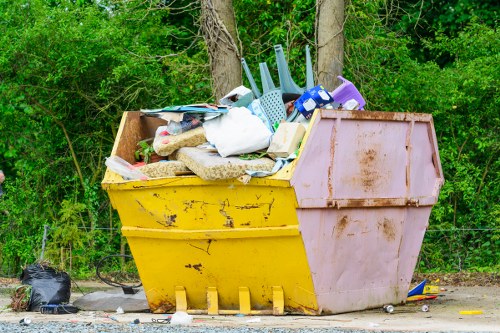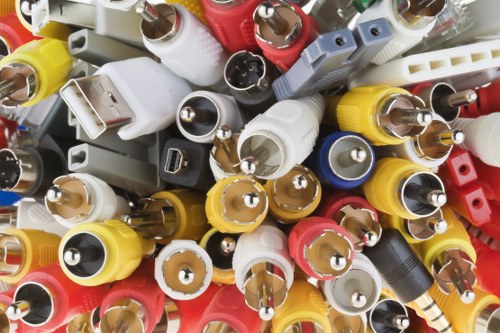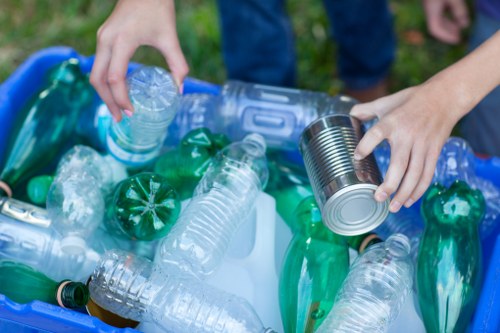Waste Clearance Custom House: Efficient and Responsible Solutions
Waste Clearance Custom House services are at the heart of modern urban management. In many cities, custom houses handle not only the storage but also the disposal of waste in a responsible and environmentally friendly manner. These facilities operate with the goal of keeping areas clean while ensuring the proper treatment of waste materials.
The concept of waste clearance has evolved over time. Traditional methods have been replaced with innovative and eco-friendly solutions that focus on recycling, safe disposal, and energy recovery. With the rise of environmental awareness, industries are now held to higher standards, and Custom Houses are no exception.
Implementing waste clearance services that meet both governmental regulations and community expectations involves a mix of advanced technology and highly trained professionals. Through careful planning and execution, waste is segregated, processed, and disposed of in ways that minimize harm to our environment.

Understanding the Role of Waste Clearance in Custom House Operations
Custom House waste clearance is not just about disposing of garbage; it is an integrated system designed to safeguard public health and protect the environment. The main goal is to ensure that all waste—be it industrial or domestic—is processed responsibly. This process often involves several stages, each tailored to the type of waste involved.
One of the key features of waste clearance at a Custom House is its ability to handle both hazardous and non-hazardous waste. The systems in place are designed to minimize any environmental impact while helping to maintain the safety of the surrounding community.
Moreover, these facilities work closely with local and national regulatory bodies to stay compliant with environmental laws. This dedication to regulatory adherence is what makes the process so secure and efficient for everyone involved.

The Process and Techniques in Waste Clearance
The waste clearance process at a Custom House follows a systematic approach. Initially, waste is collected from various sources, then sorted into different categories. This sorting process is crucial, as it determines the subsequent steps in waste management.
After sorting, the waste is either recycled, treated, or disposed of safely. For example, recyclable items such as plastics and metals are separated and sent to recycling centers, while hazardous materials are managed with extra care. This methodical approach helps in maximizing recycling efforts and minimizing environmental degradation.
In addition, many Custom Houses incorporate advanced technologies like automated sorting systems and waste-to-energy converters. These technologies not only increase efficiency but also ensure that the environmental impact is kept to a minimum.

Safety Measures and Environmental Protection
Safety and environmental protection are two pillars of an effective waste clearance strategy. At a Custom House, specialized safety protocols are in place to prevent accidents during waste handling and processing. These include strict guidelines on the handling of toxic substances and the use of personal protective equipment by workers.
Meanwhile, the environmentally conscious design of these facilities ensures that emissions and by-products are controlled. Advanced filtration systems and regular monitoring practices are employed to adhere to environmental standards.
Furthermore, continuous training programs for employees help to reinforce these practices. Regular audits and inspections ensure that the system remains robust and that any issues are dealt with promptly.

Economic and Social Benefits of Effective Waste Clearance
The economic benefits of efficient waste clearance services are significant. By converting waste into energy or recyclable materials, Custom Houses help to reduce the overall expenses associated with waste management. This, in turn, allocates more funds towards community development and other vital services.
Socially, a clean environment boosts public morale and improves the quality of life. Communities near Custom Houses have seen improvements in local health standards and overall satisfaction due to reduced pollution and better waste management practices.
Moreover, integrating green technologies in waste clearance also creates new job opportunities. This fosters local economic growth while promoting a more sustainable and eco-friendly future.

Custom House Waste Clearance: A Closer Look at Policies and Regulations
Custom House waste clearance is governed by numerous local, state, and national regulations. These rules ensure that waste is handled properly and that hazardous materials are disposed of safely. Regulations not only serve to protect the environment but also ensure the safety of the workers and surrounding communities.
Compliance with these policies is monitored through regular audits, inspections, and reporting procedures. This strict regulatory framework helps to enforce high standards and encourages continuous improvements in waste management practices.
In addition, Custom Houses collaborate with local authorities to implement green policies. These policies include initiatives like reducing landfill usage, increasing recycling rates, and promoting research into sustainable waste clearance methods.

Community Engagement and Transparency in Waste Management
A key element of modern waste clearance at Custom Houses is community engagement. Local residents are often invited to learn more about waste management processes and the technologies used. This transparency fosters trust between the government, service providers, and the community.
Workshops, educational programs, and community clean-up days are just a few examples of how Custom Houses build a strong relationship with local citizens. Such interactions help demystify the waste clearance process and encourage active participation in environmental initiatives.
Through these efforts, waste clearance becomes a community endeavor rather than an isolated governmental function. Partners from various sectors, including environmental organizations and local businesses, often work together to optimize waste management.

Innovative Technologies Revolutionizing Waste Clearance
Innovation plays a pivotal role in the evolution of waste clearance at Custom Houses. Technologies like automated sorting systems, waste-to-energy converters, and smart sensors have revolutionized the way waste is processed. These systems ensure a higher level of efficiency and reduce the chance of human error during manual sorting.
Moreover, innovative monitoring systems provide real-time data on waste levels, optimizing the frequency and routes for waste collection. This reduces fuel consumption and minimizes traffic congestion caused by waste collection vehicles.
Integration of renewable energy sources within Custom House operations further reinforces their commitment to sustainability. Such technological advancements not only improve operational efficiency but also play a critical role in reducing the carbon footprint associated with waste management.

Steps to Achieve Comprehensive Waste Clearance
Achieving comprehensive waste clearance at a Custom House involves several meticulously planned steps. The process begins with the collection of waste via scheduled pickups and dedicated collection centers. Once brought to the facility, waste is sorted based on its nature and potential for recycling.
The next stage involves advanced treatment methods. For example, biodegradable waste might be composted, whereas non-biodegradable waste is processed through mechanical recycling. In each stage, emphasis is placed on minimizing environmental hazards while maximizing resource recovery.
Following treatment, the final step is the safe disposal of waste that cannot be reused or recycled. This might involve specialized landfill sites or incineration plants with rigorous emission controls.

Best Practices for Sustainable Waste Clearance
There are several best practices that help ensure a sustainable waste clearance system at Custom Houses. First, a strict adherence to segregation at the point of collection can greatly optimize the recycling process. This means educating consumers about sorting waste into recyclables, compostable materials, and hazardous substances.
Second, continuous improvement through regular training and technological upgrades is essential. The adoption of cutting-edge technology ensures that the waste clearance system remains efficient and effective, even as waste volumes increase.
Finally, collaboration between government agencies, private firms, and local communities can facilitate the smooth operation of waste clearance methods, leading to shared benefits and a positive impact on the environment.

Local Relevance: Exploring Areas Near the Custom House
One of the most interesting aspects of waste clearance at Custom Houses is their influence on surrounding areas. Several neighboring regions have been positively impacted by the innovations and strict environmental controls implemented at these facilities. These areas benefit from reduced waste-related issues, improved recycling programs, and a cleaner local environment.
For instance, Central Custom House serves as a crucial hub due to its strategic location. This area is known for its state-of-the-art waste clearance operations that emphasize recycling and energy recovery. The efficiency of Central Custom House has inspired nearby regions to adopt similar practices.
In addition, regions like Northern Customs and Southside Customs are recognized for their commitment to environmentally friendly operations. They have implemented advanced waste sorting and processing systems that have made significant strides in reducing local pollution levels.

Nearby Areas and Their Unique Features
Let’s take a closer look at some of the nearby areas that benefit from their proximity to a Custom House. Each of the following has unique features tailored to local needs and challenges in waste clearance:
- Central Custom House: Known for its modern facilities and efficient recycling programs.
- Northern Customs: Recognized for its innovative hazardous waste processing techniques.
- Southside Customs: Offers community-driven projects that promote recycling and composting.
- East End Warehouse: Famous for integrating renewable energy into its waste management systems.
- West End Terminal Customs: Renowned for speedy clearance services due to advanced automation.
- Riverfront Customs: Situated near natural reserves, emphasizing low environmental impact.
- Harbour Customs: Specializes in handling a variety of industrial wastes efficiently.
- Market Customs: Offers accessible waste clearance services for densely populated urban areas.
- Industrial Customs: Focuses on the specialized requirements of heavy industrial waste treatment.
- Plaza Customs: Balances effective waste clearance with a strong focus on community benefits.
- Suburban Customs: Integrates local community input into its waste management strategies.
Each area has its own set of challenges and achievements; however, they all share a common goal—to achieve an efficient, sustainable waste clearance process that benefits both the environment and the local population.
By sharing resources, expertise, and best practices, these nearby regions create a network of support that enhances the overall waste clearance system. This cooperative approach has led to a significant reduction in waste mismanagement issues and increased community awareness about proper disposal methods.

Challenges and Future Prospects in Waste Clearance
Despite the many successes of Custom House waste clearance operations, challenges remain. One of the major hurdles is keeping pace with the growing volume of waste. As urban areas expand and industrial activities increase, the amount of waste that needs to be managed is also on the rise.
The integration of new technologies, while beneficial, requires significant investment. Balancing the cost of modernization with the expected environmental and social benefits is a challenge that many facilities face.
Furthermore, evolving regulations mean that waste clearance services must continually update their practices to remain compliant. This dynamic environment demands flexibility, robust training programs, and a willingness to adapt to new standards.

The Future of Waste Clearance in Custom Houses
Looking to the future, the outlook for waste clearance at Custom Houses is positive and full of promise. Emerging technologies, such as artificial intelligence and robotics, are expected to further streamline waste processing and sorting. These advancements could make the system even more efficient and reduce the strain on human resources.
Moreover, the increased focus on sustainability and renewable energy solutions means that new methods of recycling and energy recovery will greatly enhance operational efficiency. Innovative projects like waste-to-chemical conversion and advanced incineration methods could revolutionize the way waste is handled.
Collaborative efforts between the public and private sectors will continue to drive improvements in waste clearance. As research in environmental science progresses, we can expect even more effective methods for waste-to-energy transformation and resource recovery. This synergy between technology and policy will pave the way for a cleaner, more sustainable future.

Policy Recommendations and Improvements
In order to realize these future prospects, several policy recommendations can be considered. Governments and local authorities should invest in modernizing waste clearance facilities and incentivizing research into new technologies. This investment will be crucial in managing the growing complexity of waste management operations.
In addition, policies that promote transparency and community engagement can help ensure that waste clearance processes are understood and supported by the public. Regular public forums, educational campaigns, and open data initiatives will go a long way in fostering trust and collaboration.
Lastly, international cooperation and sharing of best practices among different regions can help elevate global standards in waste management. Bringing together experts from around the world to discuss and implement new ideas can accelerate progress in this essential field.

FAQs About Waste Clearance Custom House
Q1: What is a Waste Clearance Custom House?
A Waste Clearance Custom House is a specialized facility that focuses on the collection, processing, and safe disposal of waste materials. These facilities are designed to manage both hazardous and non-hazardous waste, ensuring minimal environmental impact and adherence to strict safety standards.
Q2: How does waste clearance benefit local communities?
Effective waste clearance reduces pollution, decreases the risk of health hazards, and helps maintain a cleaner urban environment. It also promotes recycling and energy recovery, which can translate to economic benefits and job creation in the local community.
Q3: What technologies are used in waste clearance at Custom Houses?
Modern Custom Houses use automated sorting systems, waste-to-energy converters, smart sensors, and advanced monitoring systems. These technologies help streamline operations, ensure safety, and reduce the environmental footprint of waste clearance.
Q4: How are nearby areas impacted by Custom House waste clearance?
Nearby areas benefit from reduced waste pollution, improved recycling programs, and increased community awareness about proper waste management. Each locality may adopt innovative practices from the Custom House model, leading to a safer and more sustainable environment.
Q5: What challenges does waste clearance face in the future?
Challenges include managing increasing waste volumes, the cost of technological upgrades, and keeping pace with evolving environmental regulations. However, ongoing innovation and collaborative efforts offer promising solutions to these challenges.
Conclusion: Creating a Sustainable Future Through Effective Waste Clearance
In summary, Waste Clearance Custom House services play an essential role in ensuring that waste is managed responsibly and sustainably. With the integration of innovative technologies, robust regulatory frameworks, and strong community engagement, these facilities are paving the way for a cleaner and safer urban environment.
While challenges remain, the continuous evolution of techniques and policies promises a brighter future. The collaboration between local authorities, technological innovators, and the communities they serve ensures that waste clearance evolves to meet modern needs.
Ultimately, the future of waste clearance lies in balancing efficiency with environmental responsibility. As Custom Houses adapt to new challenges and embrace technological advances, they serve as shining examples of how modern waste management can positively impact society as a whole.

